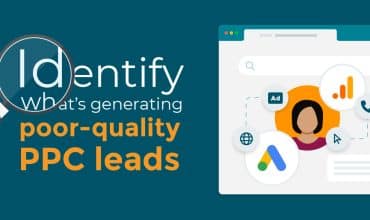The big business benefits of call tracking integrations
As marketers, we love it when our tools and apps work seamlessly with each other. It’s why third-party ‘integration facilitator’ apps like Zapier are so popular these days!
When time is money, the last thing you want is a clunky workflow hampering your productivity.
One of the most common concerns we hear about call tracking software is whether it means your current workflow and processes will be disrupted. Understandably, no one wants to change the way they work, or have to shoehorn an awkward, standalone tool into existing day-to-day tasks.
Luckily, this isn’t the case. Any call tracking platform worth its subscription fee will integrate seamlessly with the way you work. It should enhance your workflow and make you more efficient, not hamper you.
When call tracking integrations make a big difference
When call tracking is seamlessly integrated into your team and your business, the benefits for everyone are huge:
You’ll do way more with your time
Connecting your call tracking software to other tools in your martech stack puts a host of insights at your fingertips, without you having to lift a finger. Your monthly reporting will be a breeze, thanks to customisable reports that are automatically built and sent to your team. Data can be pulled into various systems – such as your customer relationship management (CRM) platform – giving you more insights without any extra effort.
You’ll make better-informed decisions
With your call tracking software talking to your other tools and apps, you’ll be able to make accurate and reliable decisions faster than ever before. For example, Mediahawk client Worldpay integrates our software with Google Analytics custom dimensions. It gives them complete visibility of where their daily marketing spend is going, right in Google Analytics. It’s a fully automated process, meaning Worldpay’s digital marketing manager, can see the data he needs in one place. And he doesn’t need to add any more work to his already busy schedule. Now, their marketing team can make strategic and budgeting decisions without having to pull data from multiple sources.
You’ll see the data you want to, in the way you want to
In Mediahawk, you can output more than 80 different data points to other martech tools using our API. It means you can set up customised data flows to the platforms that matter most to you. For example, you can send insights taken from phone calls straight into your CRM system to enrich your customer data.
You definitely won’t need to change your workflow
It’s a common misconception that implementing call tracking means a big disruption to your business. People often assume it involves ripping out existing phone systems and completely changing the way customer service and support operates. This couldn’t be further from the truth. A good call tracking platform won’t require any change to your existing phone systems. You’ll just need to add some trackable phone numbers to your marketing assets, and a small piece of code to your website if you’re using dynamic phone numbers. That’s it. The calls you receive to those numbers will route through to your existing office phones without you or your customers noticing any difference.
Where do call tracking integrations come in handy?
Let’s look at three everyday examples where integrated call tracking can make a huge difference to your business.
1. Pay per click (PPC) bid management processes
If you’re bidding on several keywords for PPC purposes, attributing which online ads drive offline calls is essential to get your budgeting in order.
Call tracking software allows you to organise both web and call data through one system. It gives you an overview of your online and offline PPC performance. Using direct integrations, you can easily adjust your budget to focus on high-performing keywords. Then you can optimise bid management to get the best cost-per-click and cost-per-lead levels.
2. Sales and marketing reports
Integrating your call tracking software with your reporting and data visualisation tools is a really smart thing to do.
With Mediahawk, you can integrate your call tracking data directly with Looker Studio, along with your other marketing platforms. It means you can get instant, customisable, and visually engaging reports without adding any manual data entry tasks to your workload.
You can input more than 80 different data points to make your reports as rich and detailed as you like. You can see the total number of calls received, visits, revenue, or any other metric you like.
3. Customer relationship management (CRM)
Imagine a world where you can quickly add leads to your CRM with full marketing attribution. Imagine being able to capture data points like a lead’s source, the keywords they used, the landing pages they viewed, referring web pages, and more. Imagine then having them automatically added to your CRM. Imagine your call handlers being able to see the caller’s details and their historical data right in front of them, live, during a call.
All this and more is exactly what’s possible when your call tracking software integrates with your CRM system. With this in place, you’ll better understand which marketing channels, ads, keywords and more, generate calls that convert to sales. You’ll also save time and cut down on human error, meaning more accurate reporting and decision making.
We’re biased, of course, but we think the benefits of integrating call tracking with your martech stack are huge.
And it’s not just the marketing team that will reap the rewards from this. Your sales and customer service teams will be able to work smarter, too. What’s more, your boss will love the improved reporting and efficiency (read: cost savings).
And you? Well, you’ll become a marketing hero no less! It’s win-win all around, even if we do say so ourselves.

Learn how Worldplay used multiple integrations to improve processes and achieve 100% marketing attribution.



